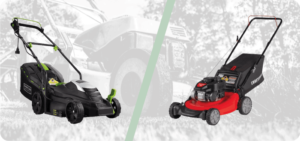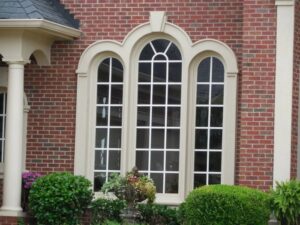
Brush cutters for overgrown yards are essential tools that can transform unruly landscapes into manageable outdoor spaces. These machines are designed to tackle thick vegetation that traditional lawn mowers simply cannot handle, making them a popular choice for homeowners and landscapers alike.
With various types available, it’s important to understand the features that make a brush cutter effective and suitable for your specific yard needs. From power options to cutting widths, selecting the right brush cutter can lead to a more efficient and enjoyable yard maintenance experience.
Brush Cutters Overview
Brush cutters are essential tools designed to tackle thick, overgrown vegetation that traditional lawn mowers can’t handle. Unlike standard mowers, which are best suited for even grass, brush cutters excel in cutting through dense brush, tall weeds, and other stubborn growth. With various types available, understanding their features and benefits can significantly enhance yard maintenance efficiency.There are several types of brush cutters, each catering to specific needs and preferences.
The most common types include gas-powered, electric, and battery-operated models. Gas-powered brush cutters are typically more powerful, making them ideal for heavy-duty tasks. Electric models offer ease of use and lower maintenance, as they don’t require fuel. Battery-operated brush cutters combine portability with the convenience of not being tethered to a power source, although they may have limitations on runtime and power compared to gas models.
Types of Brush Cutters
When selecting a brush cutter, it’s crucial to consider several key features to ensure it suits your landscaping needs. Here are the primary factors to keep in mind:
- Power Source: Choose between gas, electric, or battery-operated based on the scale of your yard work.
- Cutting Width: A wider cutting width allows for faster work, but may be less maneuverable in tight spaces.
- Weight: Heavier models can be more challenging to handle, especially over long periods, so consider ergonomics.
- Blade Type: Different blades are designed for various tasks; metal blades are great for tough brush, while nylon line is better for grass.
- Handle Design: Adjustable or loop handles provide better control and comfort during operation.
The benefits of using brush cutters over traditional mowers in thick vegetation are numerous. They offer superior cutting power, allowing users to efficiently clear overgrown areas. Brush cutters are particularly effective for vegetation that is too dense for mowers, significantly reducing the time and effort needed for yard maintenance. Additionally, these tools can reach areas that mowers cannot, such as steep slopes or narrow pathways, making them invaluable for comprehensive yard care.
“Brush cutters are designed for power and agility, effectively transforming overgrown yards into manageable spaces.”
Maintenance and Safety Tips

Maintaining a brush cutter is essential for its longevity and efficiency. Proper care not only ensures optimal performance but also enhances safety during use. Below are key practices to keep your brush cutter in top shape and guidelines for safe operation.
Maintenance Practices
Regular maintenance is crucial for the effective functioning of brush cutters. Here are some essential maintenance tips:
- Clean After Use: Always clean the brush cutter after each use to prevent debris buildup, which can lead to corrosion and mechanical issues.
- Inspect Blades: Regularly check the blades for damage or dullness. Sharpen or replace blades as needed to ensure efficient cutting.
- Check Fuel and Oil Levels: Ensure that you are using the correct fuel and oil mixture. Regularly monitor levels to avoid engine damage.
- Tighten Loose Parts: Periodically inspect and tighten any loose screws or bolts to maintain structural integrity.
- Store Properly: Store the brush cutter in a dry place, away from moisture, to prevent rust and degradation of materials.
Safety Gear and Precautions
Using a brush cutter in overgrown areas can be hazardous without the right precautions. Proper safety gear is essential to protect yourself while operating the machine. The following items should be considered:
- Protective Goggles: To shield your eyes from flying debris.
- Ear Protection: To reduce noise exposure, as brush cutters can be quite loud.
- Gloves: To protect your hands from cuts and abrasions.
- Long Pants and Sturdy Boots: To shield your legs and feet from sharp objects and ensure stability.
- Face Shield: For additional facial protection against cuts and flying objects.
Safe Operation Steps
Following a step-by-step procedure is vital for the safe operation of a brush cutter. Adhering to these steps can help minimize risks:
- Read the Manual: Before operating, familiarize yourself with the manufacturer’s instructions and safety guidelines.
- Inspect the Area: Check for obstacles such as rocks, debris, or bystanders that could pose a risk during operation.
- Wear Safety Gear: Ensure all protective gear is worn before starting the machine.
- Start the Machine Safely: Place the brush cutter on a flat surface, and start it following the manufacturer’s guidelines, keeping hands and feet clear of moving parts.
- Maintain Control: Hold the brush cutter firmly with both hands and maintain a steady stance for balance.
- Be Aware of Your Surroundings: Continuously monitor the environment while working to avoid accidents.
- Turn Off the Machine: Always switch off the brush cutter and allow it to come to a complete stop before setting it down or making adjustments.
Related Yard Equipment
Maintaining an overgrown yard is a task that goes beyond just using a brush cutter. Having the right additional equipment can significantly enhance your yard’s health, aesthetics, and overall functionality. From creating a beautiful outdoor space to ensuring efficient maintenance, complementary tools play a vital role in achieving these goals.To effectively manage an overgrown yard, incorporating various tools and equipment alongside brush cutters is essential.
These can range from storage solutions like stone brick storage to recreational installations such as swimming pools and spas. Each of these elements not only supports the maintenance of your yard but also contributes to its visual appeal and usability. Below are some tools and equipment that can complement brush cutters for yard maintenance.
Complementary Tools and Equipment for Yard Maintenance
Having a comprehensive set of tools allows homeowners to tackle various challenges that come with yard maintenance. The following tools can enhance the efficiency of your brush cutter and overall yard upkeep:
- Lawn Mowers: Ideal for cutting grass in larger areas, ensuring a neat lawn finish.
- Edgers: Perfect for defining garden beds and pathways, giving a polished look to your yard.
- Rakes and Leaf Blowers: Essential for clearing debris and leaves, making it easier to maintain a tidy yard.
- Chainsaws: Useful for removing larger branches and trees that may obstruct your yard’s beauty.
- Garden Tractors: For larger plots, these can help with transporting materials and managing extensive tasks.
In addition to the right maintenance tools, the aesthetics of your yard can be significantly enhanced by choosing the appropriate home window styles that complement your well-maintained landscape.
Window Styles That Enhance Yard Aesthetics
Selecting the right window style can contribute to the overall charm of your property, blending with your yard’s design. Here’s a comparison of popular window styles and how they can elevate your yard’s appearance:
| Window Style | Description | Aesthetic Impact |
|---|---|---|
| Casement Windows | These windows open outwards, providing excellent ventilation. | Creates an open feel, enhancing the connection between indoor and outdoor spaces. |
| Double-Hung Windows | Classic style with two operable sashes that slide up and down. | Adds traditional elegance and can be paired with various architectural styles. |
| Picture Windows | Fixed windows that offer unobstructed views of the outdoors. | Frames beautiful landscapes, making your yard a focal point of the home. |
| Bay Windows | Protruding windows that create additional interior space. | Enhances visual interest and allows for panoramic views of your garden. |
By integrating the right tools for maintenance and selecting windows that accentuate your landscape, you can create a harmonious outdoor environment that is both functional and inviting.
Closing Summary

In conclusion, brush cutters are invaluable for maintaining overgrown yards, offering efficiency and versatility that surpasses traditional mowing methods. By selecting the right equipment and adhering to safety practices, you can keep your outdoor space looking its best while ensuring the longevity of your tools.
Top FAQs
What are the primary types of brush cutters?
The main types include handheld, walk-behind, and tractor-mounted brush cutters, each designed for different levels of vegetation and user preference.
How do I choose the right brush cutter for my yard?
Consider factors such as the type of vegetation, the size of your yard, and your own comfort level with operating machinery.
What maintenance is required for brush cutters?
Regular maintenance includes cleaning the cutting blade, checking fuel levels, and ensuring all parts are secure to prolong the tool’s life.
Do I need special safety gear when using a brush cutter?
Yes, wearing protective gear such as gloves, goggles, and sturdy footwear is crucial to ensure safety while operating a brush cutter.
Can brush cutters handle small trees or shrubs?
Yes, many brush cutters are capable of cutting through small trees and dense shrubs, making them effective for clearing overgrown areas.





